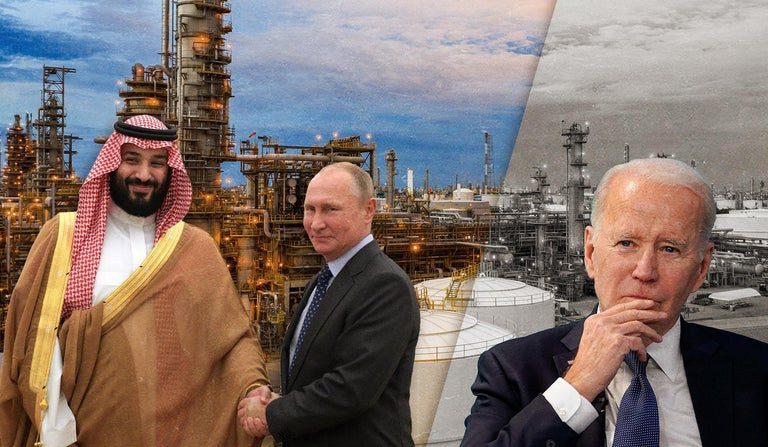The Saudis are cynical, determined to raise the price of oil in order to increase their earnings. The Russians are determined to sow division between the United States and the European Union. They represent a new type of challenge for Washington.
Joe Biden has accomplished a lot in international policy during his nearly two years as President of the United States. Unfortunately, ties with Saudi Arabia are not among them.
While crafting and effectively implementing a program to resist Vladimir Putin’s messianic belligerence and invasion of Ukraine, Biden exhibited grit and steely patience. In the process, he united and expanded NATO, gave the pact a reason to exist that it had lacked for years, and established a comprehensive and successful sanctions program against Russia.
As part of his China policy, Biden used the NATO resurgence as an anchor to further strengthen and expand alliances, particularly in the vast Indo-Pacific region stretching from India to the Korean Peninsula, Taiwan, the South China Sea and the Pacific Islands. He couldn’t reinstate the Iranian nuclear deal, but not for lack of trying.
And then there’s Saudi Arabia, and to a lesser extent the United Arab Emirates. Biden had very strong reservations about the Saudis, particularly the “pariah,” Crown Prince Mohammed bin Salman. On policy, he may have vacillated and been inattentive to those in Washington who thought he should have revisited the U.S.-Saudi relationship, which has grown from Saudi asymmetrical dependence to friction and a significant disparity of interests.
Now comes OPEC+, an alliance of the 23-member OPEC members and independent oil producers, most notably Russia – an alliance against American interests. It decides to slash oil output by 2 million barrels a day, estimated at 2 percent of daily global consumption. OPEC accounts for around 82 percent of global oil reserves and 40 percent of production, excluding Russia and the United States, the largest producer and consumer.
Without getting too deep into energy geopolitics, the real cut will be around 950,000 barrels, since many OPEC members currently produce less than their quota targets. But that’s not the point. The actual Saudi-Russian – and yes, Emirati – decision is.
There are two very irreconcilable ways of looking at the decision. One, it’s a purely business, stay-ahead-of-the-curve decision motivated by an impending global recession. Or, two, it’s a blatantly anti-American move resulting from Saudi-Russian collusion. While the first perspective might explain the Saudis’ motives and the second is consistent with Russia’s interests, the two aren’t really equally viable. As American foreign-policy orthodoxy still contends, Saudi Arabia is an ally.
The OPEC+ members met physically in Vienna, as opposed to the video conference that was originally scheduled. Why the urgency to meet? Why the rush to cut 2 million barrels so quickly?
In its history, OPEC never slashed output on this scale so swiftly. Oil demand hasn’t collapsed, inventories aren’t at full capacity.
If oil climbs to $100 a barrel (it was $89 as I wrote this), the number will still be lower than the $130 in June before Biden’s ill-conceived trip to Jeddah. But the U.S. trend of gradually decreasing prices at the pump might be reversed a month ahead of the midterm elections. While the average across the United States is $3.89 per gallon (roughly 3.8 liters), on the West Coast it’s above $6 due to refinery maintenance and a lack of pipelines delivering oil to California.
In its statement, OPEC+ cited the “uncertainty that surrounds the global economic and oil market outlooks.” Informally, it referred to Goldman Sachs’ revising down of its 2023 oil price forecast (what these forecasts are worth is another story) from $125 to $108 a barrel. That, OPEC+ argues, justifies the preemptive move.
It doesn’t. This is extremely rancid geopolitics on the Saudis’ and Russians’ part. The former are cynical, intent on raising the price of oil and increasing revenue. They’re also a political ingrate in their relationship with the United States. With the Russians, it’s all about creating discord between the United States and European Union in the hope that the EU will pressure Ukraine into accepting annexations by Russia and achieve a cease-fire.
The United States and the EU must now realize a strategic fact of life: They have no ally in OPEC. Historically, at times of crisis, the West had one dependable ally. In the 1973 oil shock and embargo, Iran was the partner. In 1979, during the Islamic Revolution in Iran and again in 1990, after Saddam Hussein’s invasion of Kuwait, Saudi Arabia was the go-to U.S. ally.
Not anymore. This should be the overriding lesson for the United States and its allies: The Gulf isn’t a reliable, trustworthy ally. Stop pretending otherwise and stop replicating ’90s cliches about “our Saudi ally.”
In Washington, beyond the initial convoluted and bland responses (“disappointment” was one of them) the decision was interpreted as an affront against Biden and the United States. The Riyadh-Moscow axis has become a permanent feature of OPEC+ policy-making, and this is increasingly a zero-sum game. The more the axis is active and coordinated, the less reliable Saudi Arabia is to the United States. The idea to designate the OPEC+ move as “an act of hostility” with ensuing legislation will very likely gain bilateral traction in Congress.






